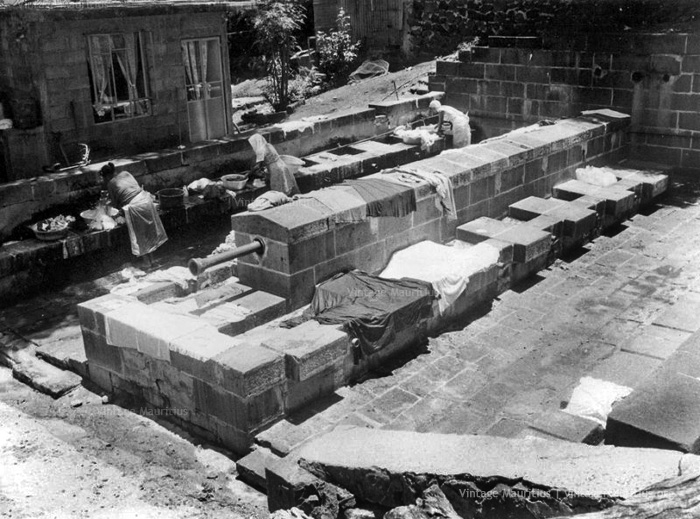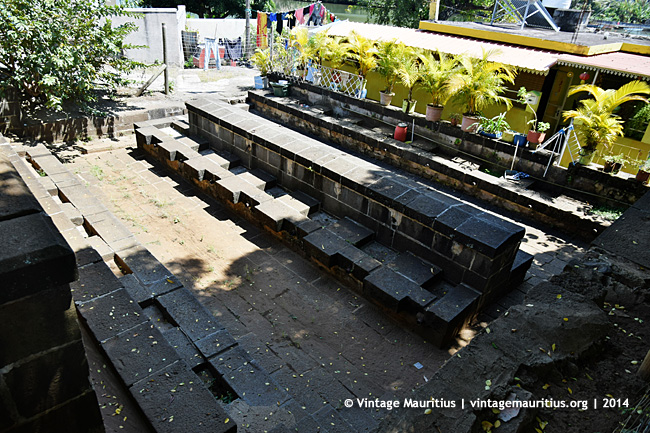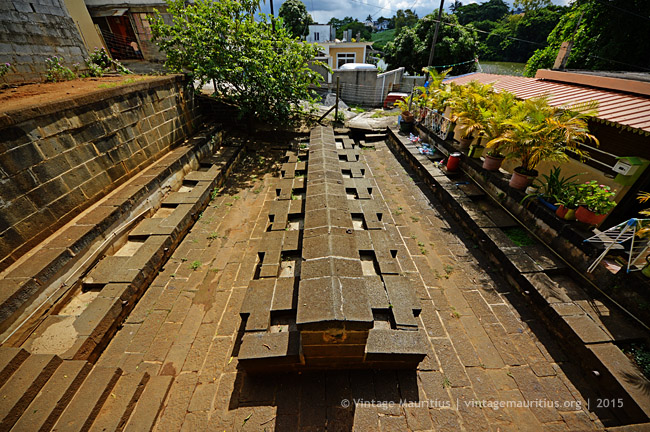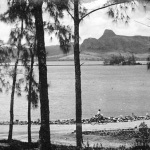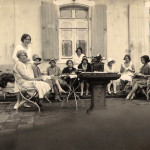The Village of Mahebourg, by definition, is named after the most successful governor of the island during the early french occupation period. Mahebourg (Mahé-Bourg), Mahe from Mahé de La Bourdonnais, and Bourg, the french definition to a town, was once chosen to be the main Port of the island known as ‘Port Sud-Est’, but later was abandoned in favor of Port Louis, also known as ‘Port Nord-Ouest’. This choice most certainly was due to the South East Trade Winds making it difficult for early vessels to leave the port, even though entrance was much easier. Mahebourg today still carries traces and remains of the early french occupation period, and among the most common:
The Abreuvoir
The Washhouse/Lavoir
The wide streets typical of French and Dutch occupation
The Church of Notre Dame des Anges (originally located at Grand Port)
The Old Gheude Castle (Chateau Robillard), now Naval Museum.
The ‘Lavoir’ (Washhouse) appears to be dating round 1770s and is built of beautifully crafted rectangular stones, most probably crafted by slaves. The ‘lavoir’ served as a washing facility to local washerwomen on the bank of La Chaux River, near the Cavendish Bridge, and it is believed that it was used primarily for the cleaning of uniforms and other outfits for french soldiers posted in the batteries on Ile de la Passe, Ile aux Fouquets, Pointe des Regates, Pointe Jerome and Pointe de la Colonie.
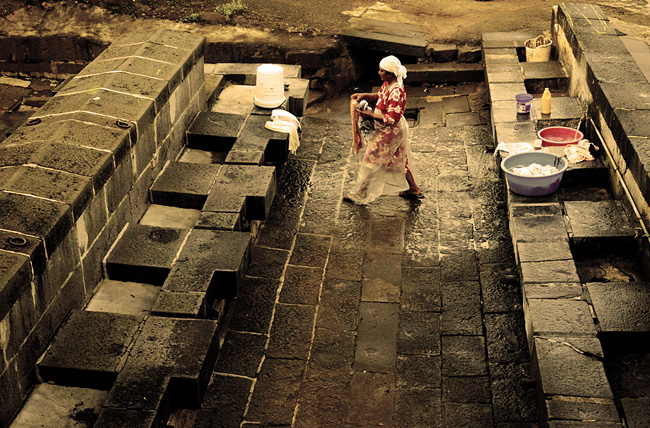
Mahebourg – Lavoir / Washhouse – 2010 (Courtesy)
During the British occupancy period the washhouse also served the military for the Mahebourg Barracks situated some 200 meters from this place. This facility was still in use until recently where it has been shut down due to the water supply cost and is currently preserved as a historical site instead (even though the preservation method is arguable).
